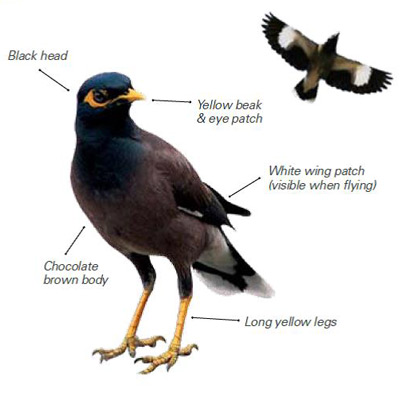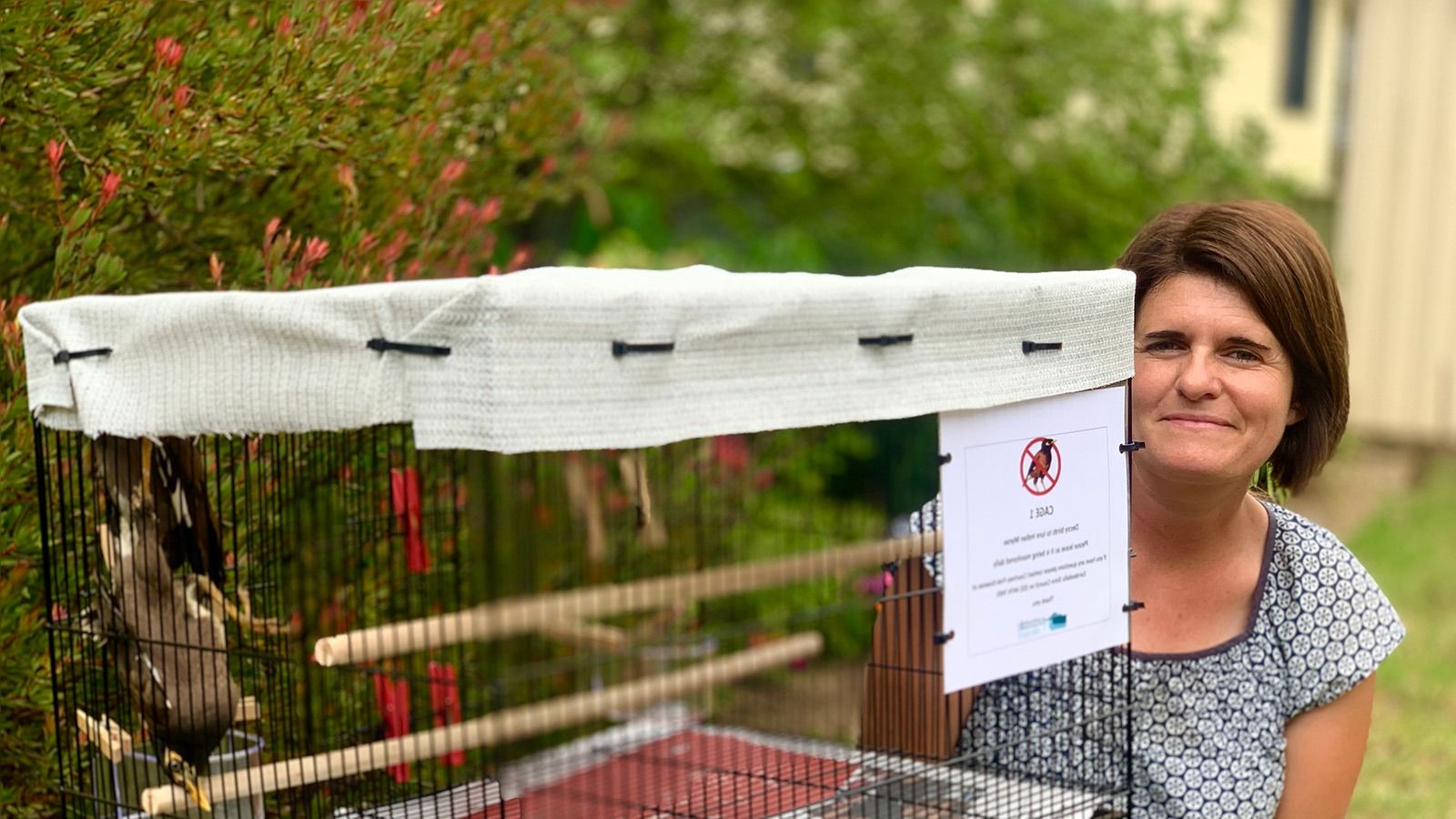Indian Myna control program
The Indian Myna (Acriodotheres tristus), also known as the Common Myna, was introduced to Australia from southern Asia in the late 1860s to control insects in the fields around Melbourne. The population rapidly established along the eastern coast of Australia, and they are now often found in urban environments and agricultural areas.
Indian Mynas are scavengers and are able to eat a wide range of food types including insects, fruits, vegetables, pet food and stock feed.
At night they gather to sleep in communal roosts in large dense trees or buildings.
Why they're considered a pest
Indian Mynas are one of the world's 100 most invasive species (International Union for Conservation of Nature). They are:
- aggressive, competing with native wildlife for scarce resources, eg, Rosellas for tree hollows. They evict animals and birds from their nests, destroy eggs and attack chicks of other species. They breed in tree hollows which are then un-useable by other wildlife, including arboreal mammals (ie, possums, gliders etc,)
- an agricultural pest, exploiting stock feed and causing damage to fruit and grain crops
- carriers of bird mites and other diseases; inhaled mites can cause asthma and hayfever. They also spread rubbish about when they forage in open rubbish bins, creating a further public health risk.
What they look like
The Indian Myna (Common Myna) is a chocolate brown bird, about 12cm tall, with a black head and neck. A striking yellow beak, eye patch, feet and legs are also distinguishing features.
The Common Myna is sometimes confused with the Noisy Miner (Manorina melanocephala). The Noisy Miner is a little larger (24cm - 29cm) than the Common Myna and its body is mostly grey.
Although both species have similar common names, the Noisy Miner is a native honeyeater. Both of these species have yellow bills, legs and bare eye skin. The Common Myna however has large white wing patches that are visible when in flight.

What Council is doing
After years of persistence and community collaboration, many areas across Eurobodalla are now free of Indian Mynas.
In 2009 Council initiated the shire-wide Indian Myna Control Program. We introduced this program to limit the population of these destructive birds by offering residents volunteer-made traps to humanely catch the birds for euthanasia.
Council continues to support this vital environmental program.
You can contact Council to borrow a trap or ask for help with trapping:
- T: 4474 1000
- E: Natural Resource Officer
What you can do to help
Whilst trapping has helped to reduce Myna numbers in Eurobodalla residents' backyards, there are many things you can do to help further reduce the occurrence of Indian Mynas in your area, such as:
- Don't feed birds as this often encourages Indian Mynas - native birds prefer to forage on native flowers and seeds.
- Don't leave uneaten pet food outside and feed pets indoors where possible.
- Cover compost bins.
- Prevent access to poultry and stock feed where possible.
- Ensure that rubbish bins and other potential food sources are covered.
- Block holes in roofs and eaves to stop Indian Mynas nesting.
- Remove weeds, especially berry producing weeds such as privet, asparagus fern, ochna, African olive and camphor laurel.
- Plant native trees and shrubs to reduce open areas in gardens. Avoid exotic tree species commonly used as roosts eg, pines and palms.
- Keep an eye on hollow trees and check for Indian Myna presence.
- Find and destroy nests.
- Watch Indian Myna populations around your home and local area, including reporting roost tree locations to Council at:
- T: 4474 1000
- E: Natural Resource Officer
More information
- Department of Primary Industries: Myna birds
- Birds in Backyards: Common Myna
- RSPCA: Management of Common (Indian) Myna birds - information paper
- Canberra Indian Myna Action Group: Indian Mynas or native species?
Get involved
If you need more information about the Indian Myna Control Program, or you'd like to report a sighting or nesting activity, contact Council’s Natural Resource Officer, Courtney Fink-Downes:
- T: 4474 1000
- E: Natural Resource Officer

